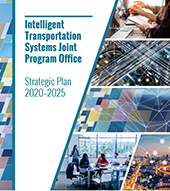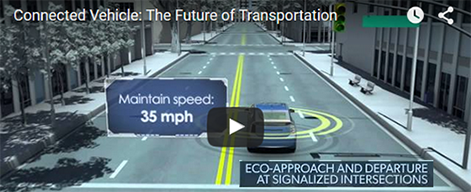Research Archive
In 2013, there were 32,719 people killed in motor vehicle traffic crashes in the United States. Pedestrians, bicyclists, and other nonvehicle occupants made up 17 percent of these deaths. Despite a steady decline in the number of roadway fatalities in recent years, the number of pedestrian and bicyclist fatalities has remained relatively consistent. The U.S. Department of Transportation (USDOT) understands that these vulnerable groups have special safety needs and challenges that must be addressed. Thus, the protection of pedestrians, bicyclists, and other nonvehicle occupants is part of the Department’s ongoing efforts in the areas of connected and automated vehicle research.
Vehicle-to-Pedestrian Communications Research
For the past decade, the USDOT has been researching and testing a system of vehicles that can sense the environment around them and communicate that information to other vehicles, infrastructure, and our personal mobile devices. This connected vehicle communication will enable safety, mobility, and environmental advancements that current technologies are unable to provide. The technology is expected to reduce unimpaired vehicle crashes by 80 percent.
Currently, the connected vehicle environment includes three major approaches to communication:
- Vehicle to vehicle (V2V)
- Vehicle to infrastructure (V2I)
- Vehicle to pedestrian (V2P)
The V2P approach encompasses a broad set of road users including people walking, children being pushed in strollers, people using wheelchairs or other mobility devices, passengers embarking and disembarking buses and trains, and people riding bicycles. Get additional information about V2P in the Vehicle-to-Pedestrian Communications Fact Sheet.
Resources:
- Smartphone-Based Mid-Block Pedestrian Crossing In-Vehicle Warning – Phase 2
- Vehicle-to-Pedestrian (V2P) Technology Test Bed
- Pedestrian Test Bed Phase II
- Vehicle-to-Pedestrian (V2P) Technologies
- Vehicle-to-Pedestrian Database
- V2P Fact Sheet
- Infographic: Pedestrian at a signalized Intersection
- Transit Bus Stop Pedestrian Warning











